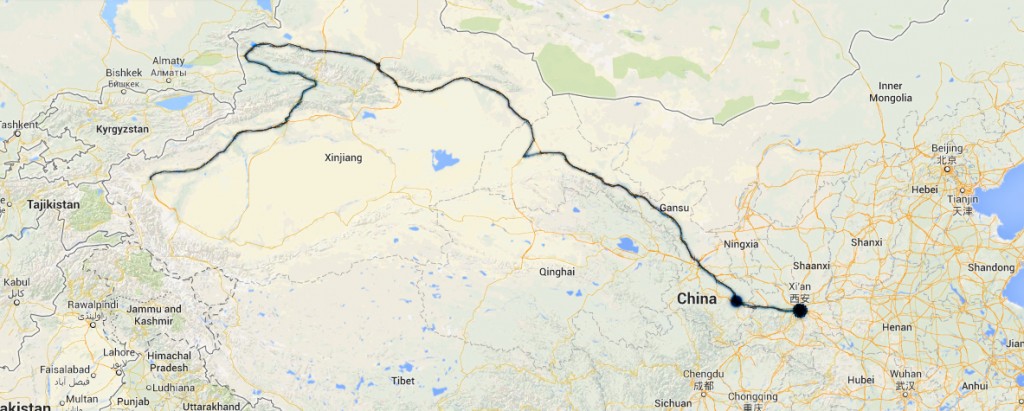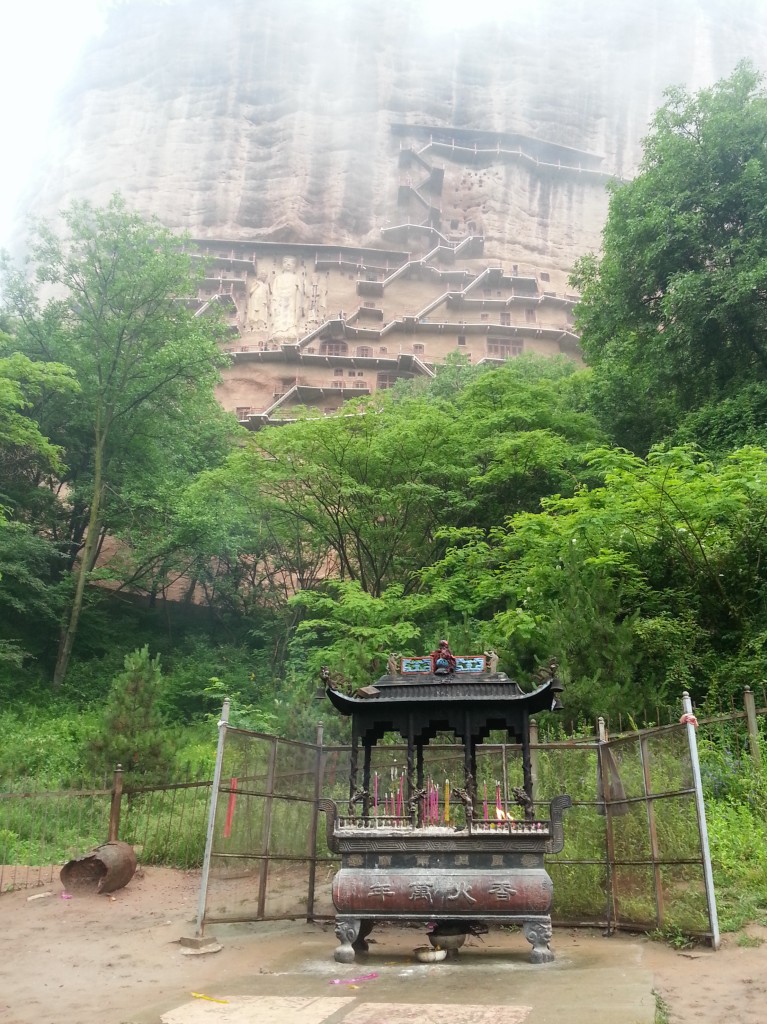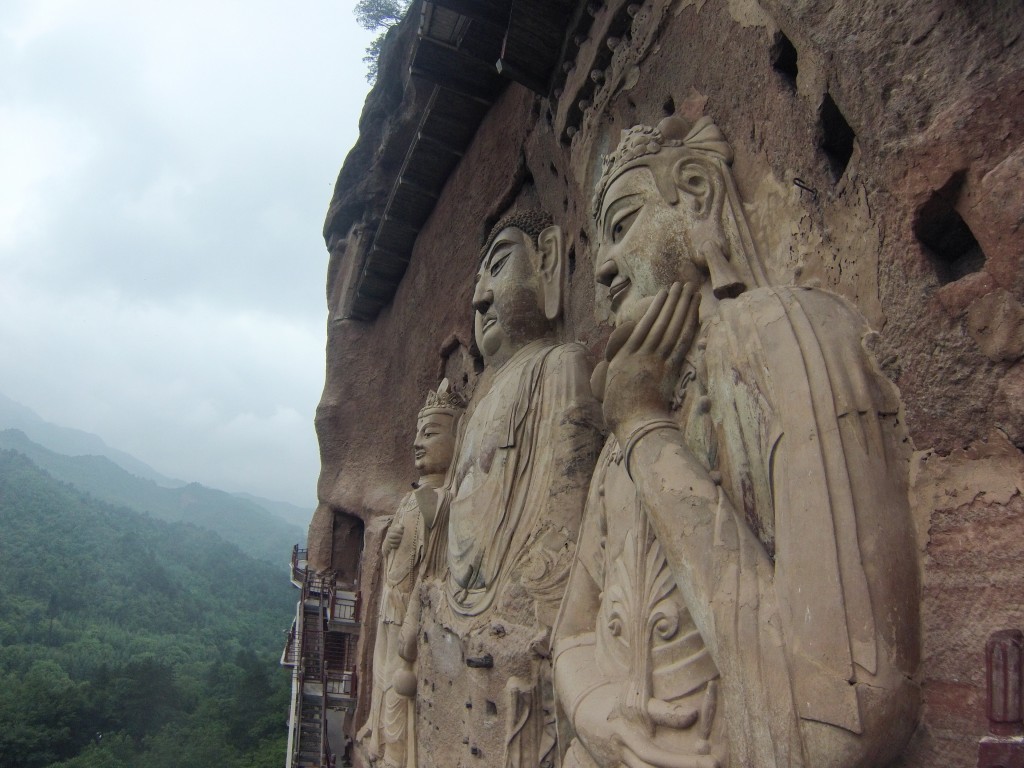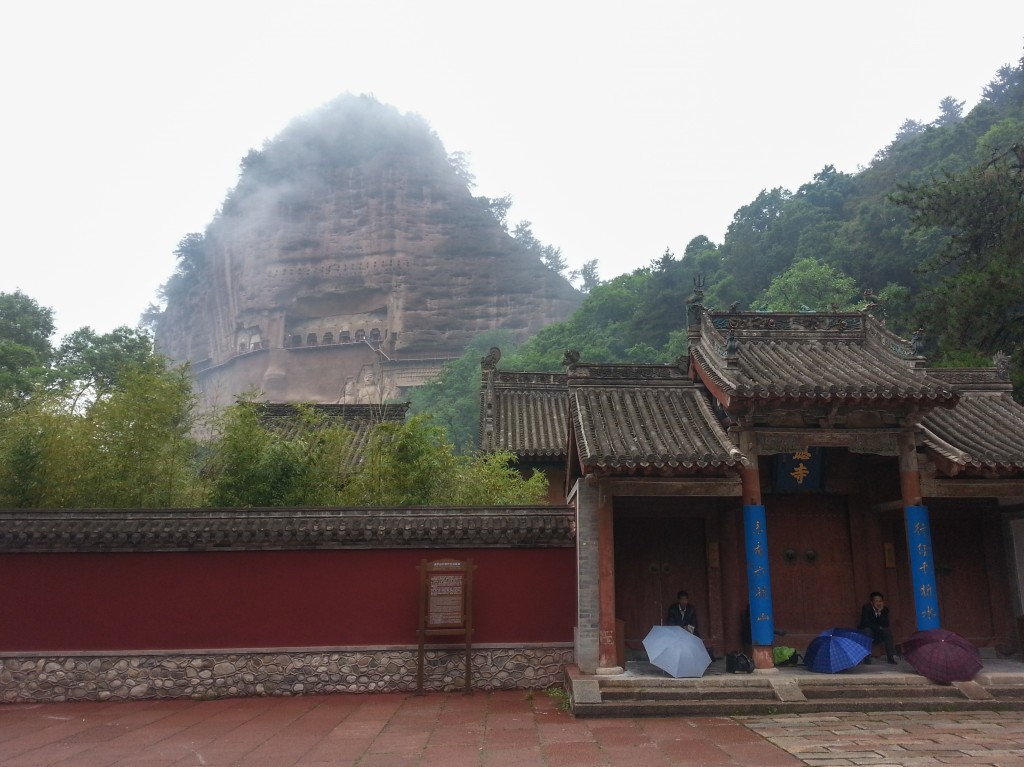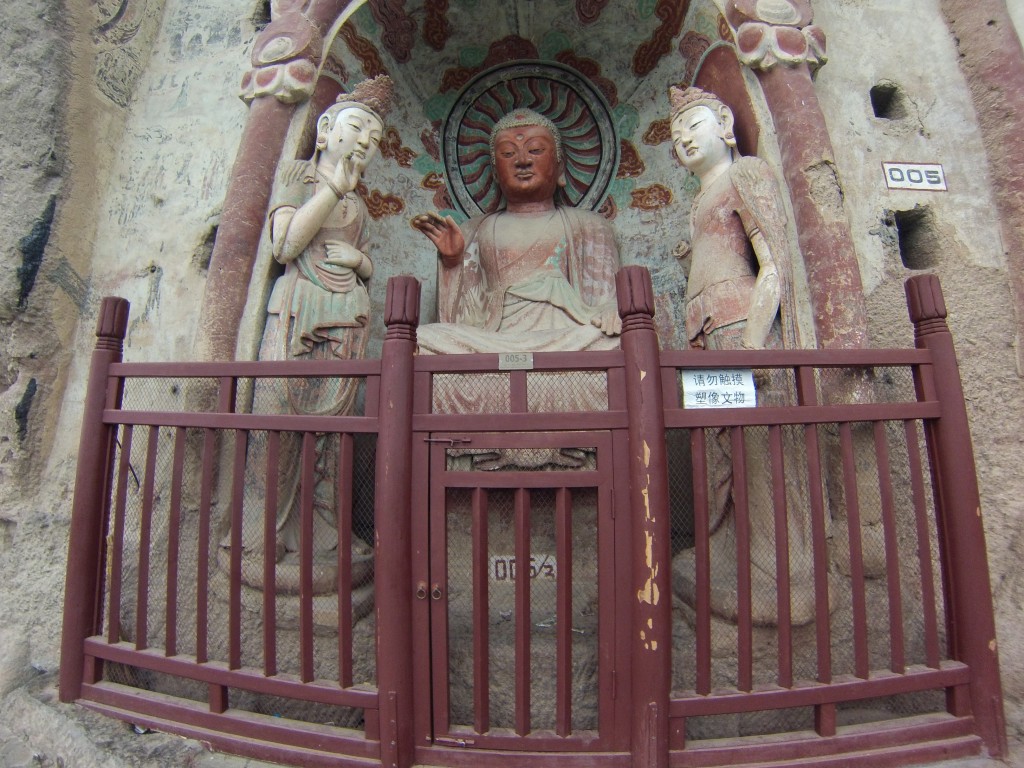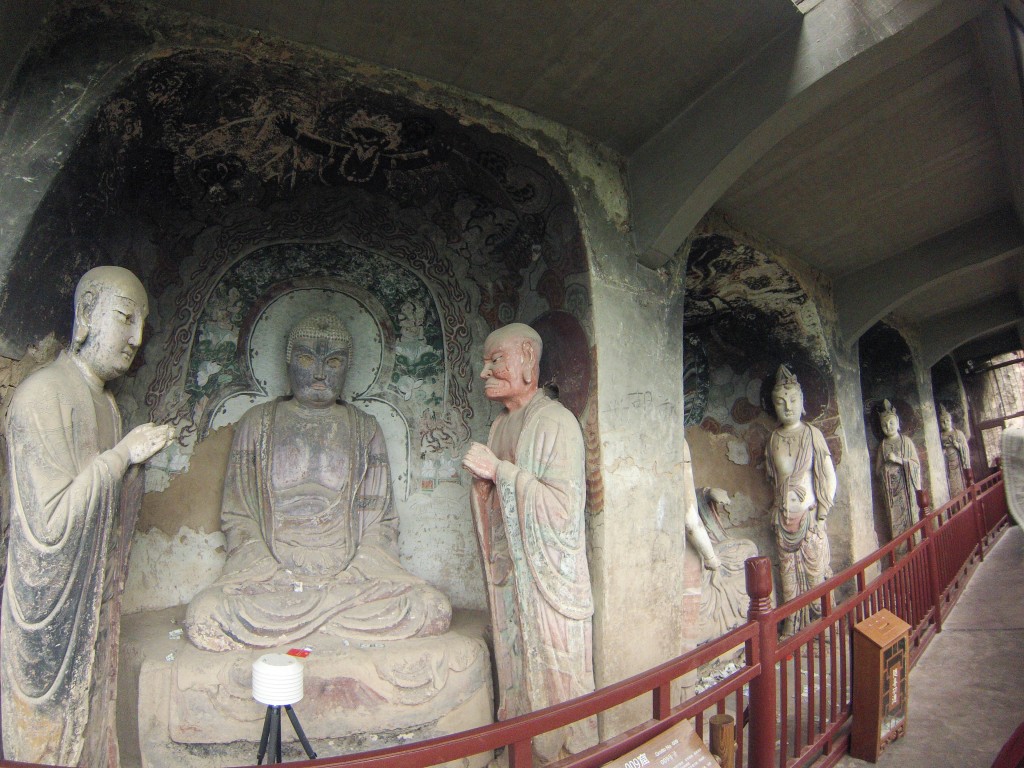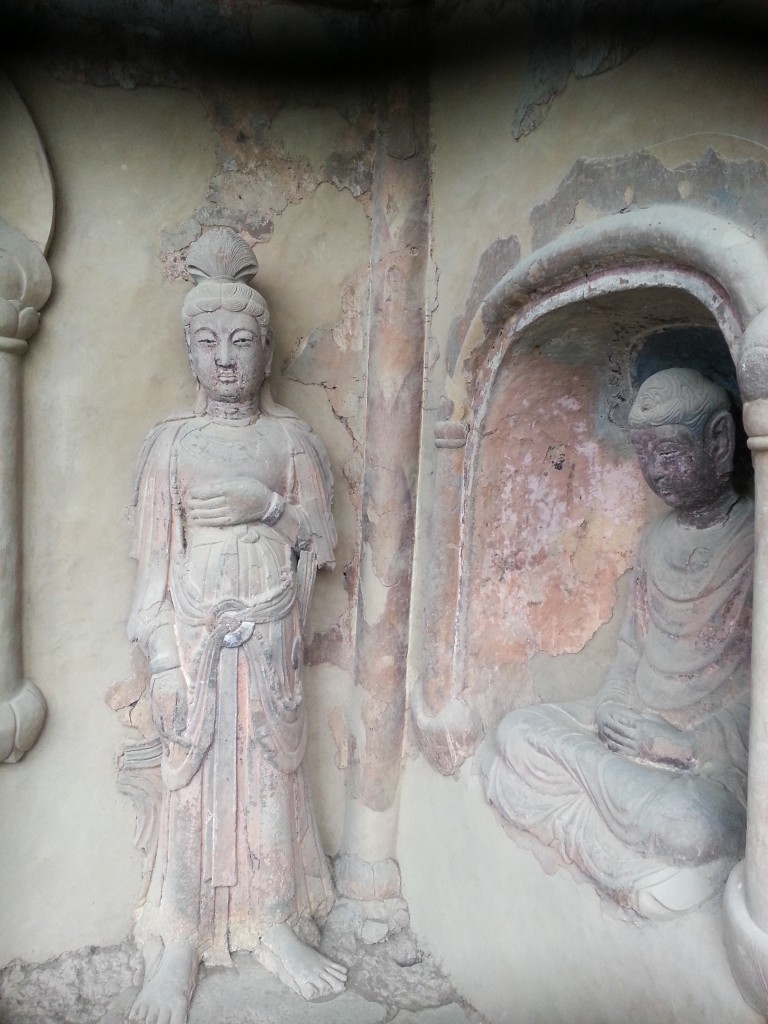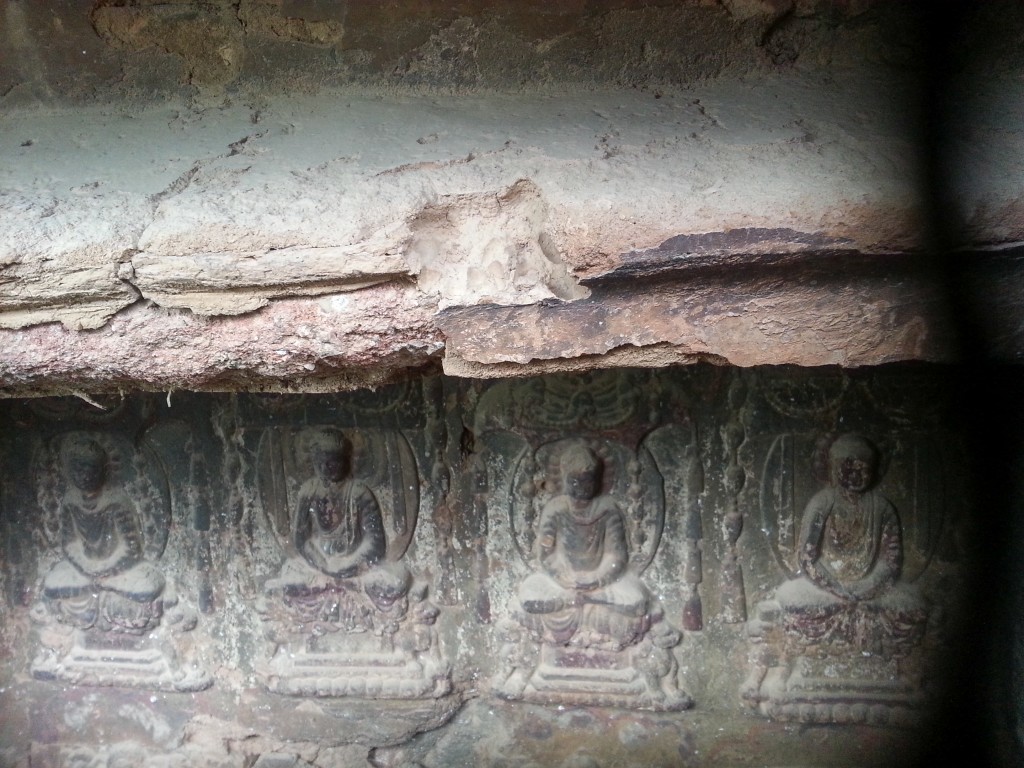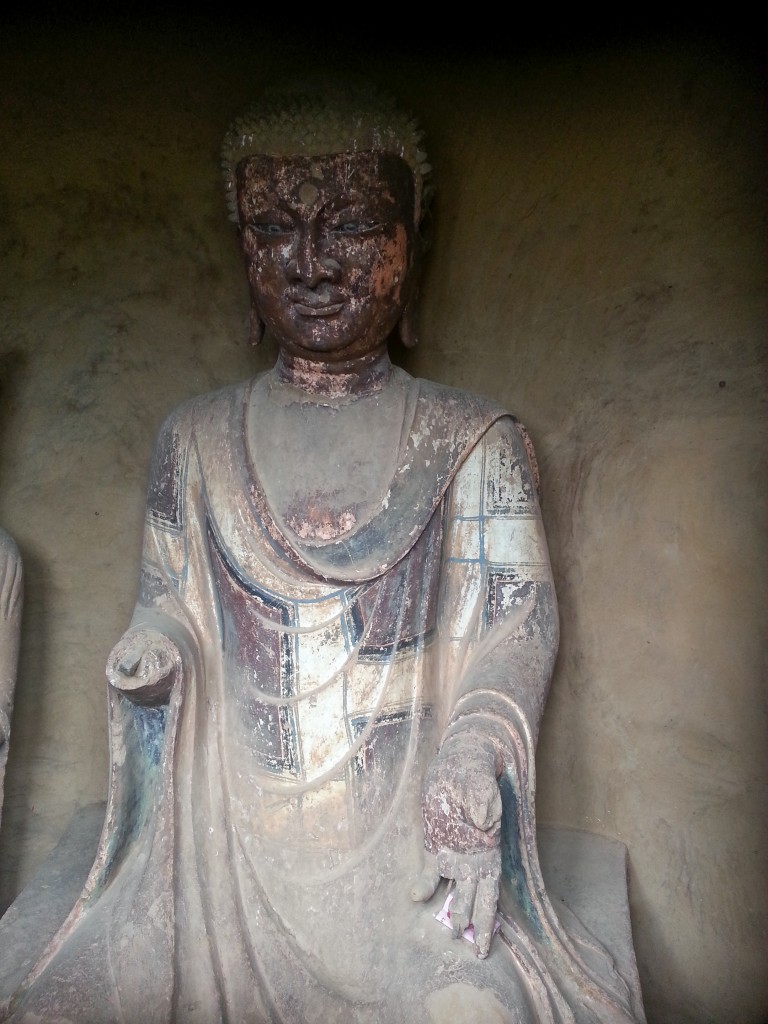America has two kinds of national parks: one is a place of natural beauty, a Yellowstone or a Yosemite. Another is a place of historical significance, a Gettysburg or a Governor’s Island. In America, natural beauty and historical importance segregate themselves from each other naturally, like oil and water, as if a place cannot be beautiful if history has occurred there.
China, on the other hand, is often able to combine nature and history, and Maijishan is one place that does that. Maijishan is a collection of carved Buddhist caves sprinkled along a series of cliff faces in the green mountains in the very east of Gansu Province. There are one hundred and ninety four caves, ranging in size from a foot and a half to more than forty feet high. Caves were being carved here as early as the fourth century A.D. and most of the caves were completed before the Tang Dynasty, beginning in the early seventh century.
The images carved into the cliff face are entirely Buddhist. The caves location in Tianshui, one of the first stops along the Silk Road, is no accident. Today, Tianshui is a backwater, but this path was the route along which Buddhism entered China from the west, from India and Afghanistan, and these hand-carved caves were one of the ways that minor rulers in the area expressed their fealty to the new religion.
Don’t miss a single video from our adventure. Click the red Youtube button below to subscribe!
